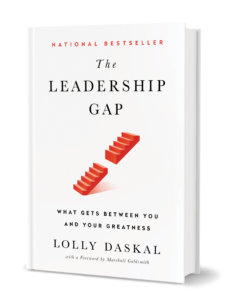
Most of us face decisions of some kind on a daily basis–and many of us wonder how we can improve our decision making skills so we can make clear, confident choices. Whether you’re a CEO, manager, teacher, coach, professor or anything else, you want to make the best possible decisions.
Decision making should be a two step process: the first step is gathering relevant information, and the second is deciding on the basis of what you’ve learned. Most people, however, are biased when it comes to information. If you think you already know the answer, it’s hard to take in new information, and in the end most people have made up their mind before everything is even considered.
But there’s the good news, in the form of a methodology for making decisions with confidence and clarity. Here are the key principles:
1. Don’t assume you’re the smartest person.
Especially if they feel inadequate to make the best decision, people often need to feel they’re the smartest and have all the answers (even when they don’t). This attitude will do nothing but hold you back. Recognize that you still have a lot to learn and seek out information with humility and an open mind.
2. Learn to suspend judgment.
I cannot overemphasize how much our biases get in the way of our good decision making. Bias tends to be the downfall of many smart and successful individuals, if you want to learn something new and gain a new perspective, forgo your biases and suspend your preconceived judgments, so in order, to have a clear enough and open enough to make choices and decisions with clarity.
3. Generate creative alternatives.
The wider the range of options you explore, the better your final decision is likely to be. Generating a number of different options may seem to make things more complicated, but coming up with alternatives forces you to dig deeper and look at the problem from different angles. Try to step outside your normal patterns of thinking and come up with some truly innovative solutions
4. Remember that to get is to receive.
People are more inclined to speak about what they know than to be silent and learn what they don’t. Instead of giving and not learning, aim to get so you can learn everything you need to know. Get a bit of feedback from someone you can trust and whose opinion you value. Listening to others can improve your understanding of what’s at stake.
5. Gain clarity with objectivity.
Before you begin to make a decision, make sure you fully understand the situation. It may be that your objective can be approached in isolation, but it’s more likely that there are a number of interrelated factors to consider. Every choice comes at a cost, so look at things objectively and test your ideas with others.
6. Frame your choices:
Ask yourself if you will be pleased with your decision five minutes from now, five months from now, five years from now. This strategy makes you consider the short-term, medium-term and long-term consequences, along with the value and benefits, that come with your decision. When you apply this technique consistently, it will help you become more fluent in your decision making.
7. Evaluate your decisions.
With all the effort and hard work you’ve invested in selecting alternatives, it can be tempting to want to move ahead with your choice, But that’s the moment to pause and evaluate. Hindsight is great for identifying why some choices have been more successful than others. So before you start to implement your decision, take a long, hard look to make sure that you’ve gotten as much feedback and objective thinking and input as you can, because your final decision is only as good as the facts and research you have assembled.
The path of our lives is determined largely by the choices we make and the decisions that you take, make sure yours are confident and clear.
N A T I O N A L B E S T S E L L E R
The Leadership Gap: What Gets Between You and Your Greatness
After decades of coaching powerful executives around the world, Lolly Daskal has observed that leaders rise to their positions relying on a specific set of values and traits. But in time, every executive reaches a point when their performance suffers and failure persists. Very few understand why or how to prevent it.
Additional Reading you might enjoy:
- 12 Successful Leadership Principles That Never Grow Old
- A Leadership Manifesto: A Guide To Greatness
- How to Succeed as A New Leader
- 12 of The Most Common Lies Leaders Tell Themselves
- 4 Proven Reasons Why Intuitive Leaders Make Great Leaders
- The One Quality Every Leader Needs To Succeed
- The Deception Trap of Leadership
Photo Credit: Getty Images
Of Lolly’s many awards and accolades, Lolly was designated a Top-50 Leadership and Management Expert by Inc. magazine. Huffington Post honored Lolly with the title of The Most Inspiring Woman in the World. Her writing has appeared in HBR, Inc.com, Fast Company (Ask The Expert), Huffington Post, and Psychology Today, and others. Her newest book, The Leadership Gap: What Gets Between You and Your Greatness has become a national bestseller.
Trackbacks/Pingbacks
[…] have strong leadership skills. This means that they need to be able to motivate their teams and make tough decisions with confidence. They should also strive for excellence in all areas of the business, from customer service to […]